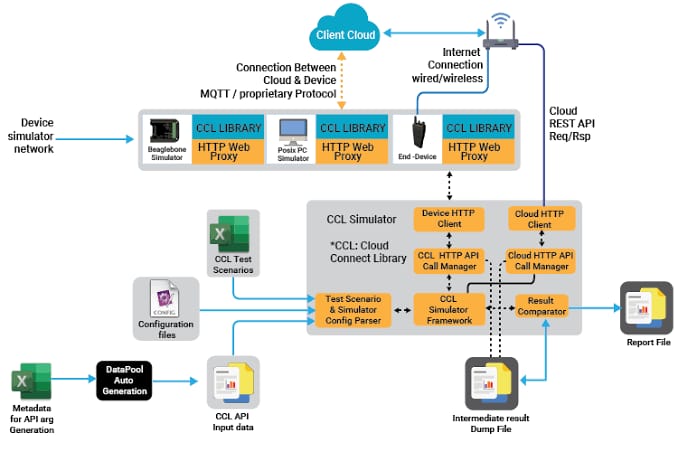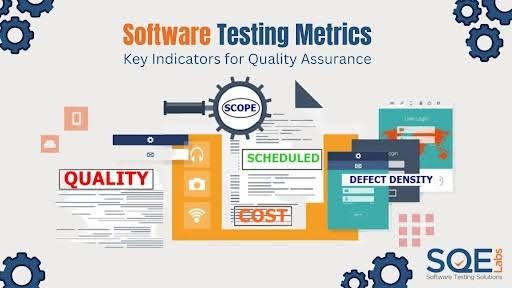Navigating the Current Flow

In the ever-evolving landscape of software development, automation testing has emerged as a cornerstone for ensuring product quality, efficiency, and reliability. With advancements in technology and methodologies, the flow of automation testing has undergone significant transformations, shaping the way teams approach quality assurance.
Shift-left Approach
Automation testing has shifted earlier into the development lifecycle, empowering teams to detect and address defects sooner. This shift-left approach emphasizes integrating testing activities into the initial stages of development, enabling quicker feedback loops and reducing the cost of fixing defects later in the process.

DevOps and Continuous Testing
The adoption of DevOps practices has accelerated the integration of automation testing into the continuous delivery pipeline. Continuous Testing ensures that every code change is automatically tested, enabling teams to release software at a rapid pace without compromising quality. Automation plays a pivotal role in executing tests swiftly and reliably within this streamlined workflow.

AI and Machine Learning
AI and machine learning have revolutionized automation testing by enabling intelligent test automation. From predictive analytics to self-healing test scripts, AI-driven testing solutions enhance test coverage, identify patterns, and optimize test execution. This innovation enables teams to focus on high-impact testing activities while leveraging AI for repetitive and time-consuming tasks.

Shift-right and Test Orchestration
While shift-left emphasizes early testing, shift-right complements it by focusing on monitoring and testing in production environments. Test orchestration tools streamline the management and execution of automated tests across various platforms and environments. This approach ensures comprehensive test coverage and enables teams to identify and address issues proactively in real-time.

Cloud-based Testing
Cloud-based testing platforms offer scalability, flexibility, and accessibility, making them indispensable for modern testing environments. By leveraging cloud infrastructure, teams can run automated tests in parallel across different configurations, browsers, and devices, accelerating the testing process and enhancing test coverage.

Shift towards Codeless Automation
The rise of codeless automation tools has democratized test automation, enabling non-technical stakeholders to create and execute tests efficiently. With intuitive user interfaces and drag-and-drop functionalities, these tools empower testers, business analysts, and domain experts to contribute to the automation effort without the need for extensive programming knowledge.

Test Automation for Mobile and IoT
Addressing the unique challenges of mobile and IoT testing with automation. Using mobile automation frameworks like Appium and XC Test for cross-platform testing. Testing IoT devices and systems with specialized automation tools and frameworks.

Shift in Testing Metrics and Quality Assurance
Moving beyond traditional metrics like test coverage and defect density. Emphasizing quality attributes such as performance, security, and usability. Implementing holistic approaches to quality assurance with automation at the core.

Conclusion:
The evolution of automation testing reflects a holistic approach that embeds automation throughout the software development lifecycle. From early defect detection to continuous testing in production, automation empowers teams to deliver high-quality software efficiently. Organizations can navigate this landscape by embracing emerging technologies, methodologies, and best practices to stay competitive. This journey is driven by innovation, collaboration, and a commitment to excellence, urging us to adapt to change and harness automation’s power to create exceptional software experiences for users.
Key Takeaways
AI and Machine Learning: AI-driven automation for intelligent test execution and optimization.
Shift-right and Test Orchestration: Proactive testing in production environments with streamlined test management.
Cloud-based Testing: Scalable and accessible testing on cloud platforms for enhanced coverage.
Codeless Automation: Democratization of test automation with user-friendly tools for non-technical stakeholders.
Mobile and IoT Automation: Specialized tools for addressing mobile and IoT testing challenges.
Shift in Testing Metrics: Emphasis on quality attributes like performance, security, and usability.
Holistic Quality Assurance: Automation integrated across the software development lifecycle for improved efficiency and effectiveness.



Really a helpful content @jeevitha
Nice
This blog nails the importance of automation testing in today’s software world, covering everything from catching bugs early to using AI for smarter testing. Super informative and easy to follow
@Jeevitha, A very useful blog to upgrade our skills.
Clear explanations of key trends like shift-left, DevOps, AI, and cloud-based testing.
This article provides valuable insights into the significance of test automation in improving testing efficiency. Automation plays a pivotal role in modern software development by accelerating the testing process, reducing manual effort, and enhancing overall product quality
Thoughtful explanation. Hope to read more from you.